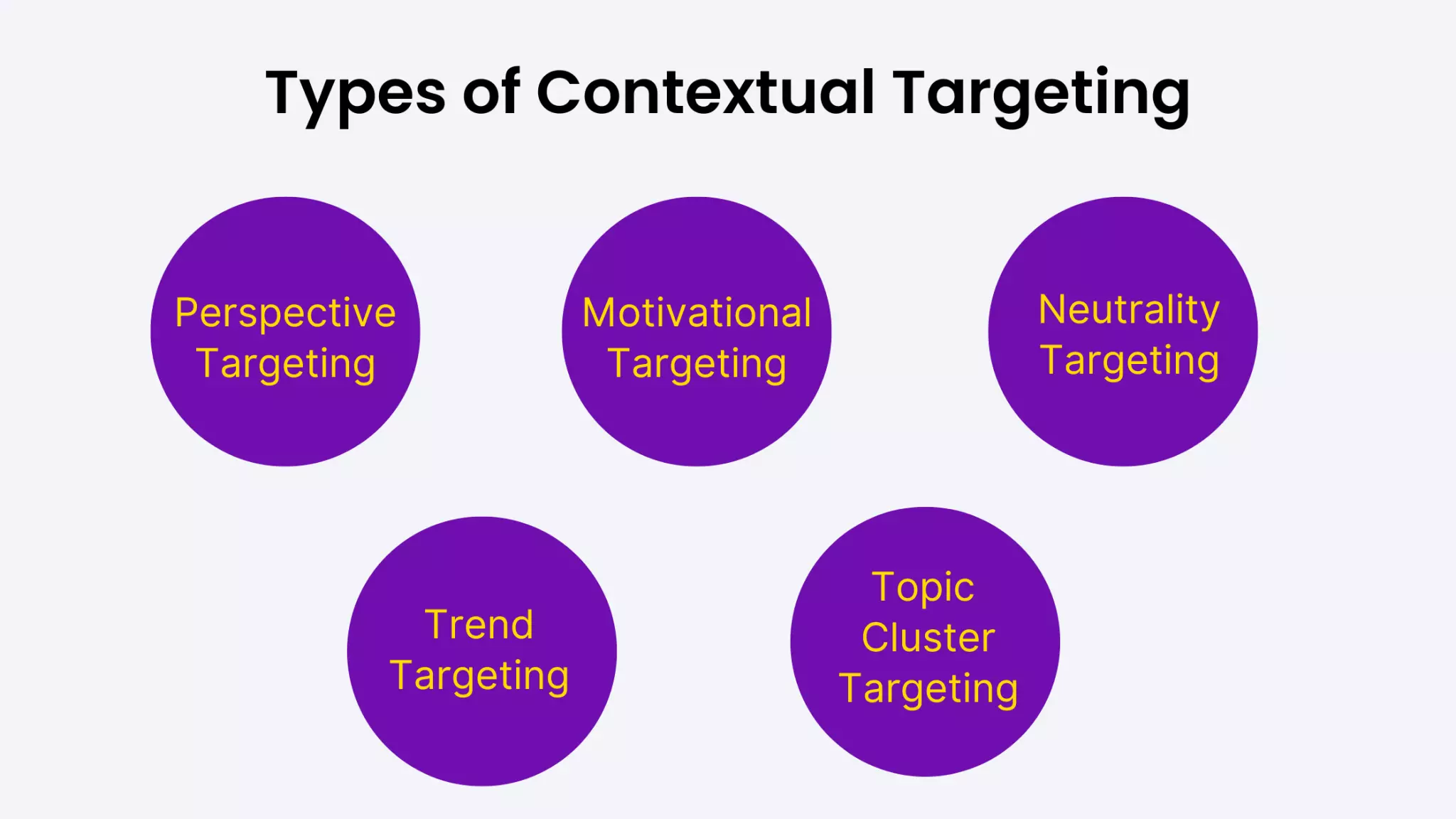The context is powerful not only in just content creation but also in digital advertising. According to Statista, global spending on contextual advertising in 2021 was estimated at 178.3 billion U.S. dollars. By 2027, this expenditure is anticipated to reach 376.2 billion dollars, effectively doubling in size.

So, why there’s a sudden surge in contextual advertising?
Due to various data privacy laws coming into effect, media outlets, including Mozilla and Google removing third-party cookies from web browsers.
Although the industry is coming up with new solutions to enhance targeting capabilities, contextual advertising is something that can be leveraged to deliver relevant ads to users without violating privacy rights and worrying about third-party cookies.
“Contextual targeting never went away, but its value has been made more tangible by GDPR. Context has always been a filter, it’s just grown in importance.”
– Jean-Paul Edwards, Strategy and Product Development, GumGum (Src)
So, this article aims to cover everything from the basics of contextual advertising to how top brands are doing it and how it is expected to grow in the future.
Table of Contents
What Is Contextual Advertising?
Contextual advertising is a form of targeted advertising that enables publishers to display ads based on the keywords of a webpage. Unlike behavioral advertising, which relies on cookies or tracking pixels, the contextual focus is on keywords or the page’s content.
For instance, if a user comes to a web page with content related to recipes, then the user may see ads from a brand selling edible products or crockery. If the user doesn’t click or interact with the ad in one go, the next ad shown to him/her will automatically be the next relevant ad.
Besides, with the advancement in the technologies and advertising industry, contextual advertising isn’t limited to a single keyword. Publishers can now decipher any visual content on the web pages and show relevant ads to the visitors.
Various top media outlets like The Guardian are working on advanced projects (e.g., Ozone) that aim to help advertisers display contextually relevant ads on their websites. Look at the types of contextual advertising (aka semantic targeting) done by the NYTimes:

In simple terms, these aren’t actually types of contextual advertising. But, they are basically categories of the NYTimes articles used to create an audience base and then deliver targeted ads to the audience. So, how does contextual advertising work? Let’s get into that.
How Does Contextual Advertising Work?
Contextual advertising can be done via two methods – Content keyword and Topic.
In the former method, the ads are displayed around the main keyword of the content of a web page. In the second method, a publisher can display relevant ads around the webpage, a topic similar to the example we have stated before.
One of the first major contextual advertising networks, Google AdSense, works on the same methods. The network enables Google’s bots to calculate the relevancy of the page’s content and then display the contextual ads on the publishers’ web pages. In addition to identifying the text on the page, it can also identify the text on an image and display contextually relevant ads on top of the image ad.
In programmatic advertising, the publisher passes contextual information such as URL, keywords, content, and categories or tags to the ad server. Then, the ad server passes the information to the ad networks, SSPs, or ad exchanges that further pass it to the demand-side platform to return contextually relevant ads.
In header bidding, the publishers pass contextual information (such as keywords, topics, etc.) to their wrapper, which sends it to the SSPs or exchanges via ad requests. Carrying forward, SSPs or ad exchanges pass the information in their bid requests as bidder parameters to their respective DSPs.
Additional Note: If you have Google Ad Manager as an ad server, you can do contextual advertising via key-value targeting. Read more in this detailed guide.
Benefits of Contextual Advertising
According to a report by GumGum,
- The memorability of high contextually relevant ads is 1.6x higher than a low contextually relevant ad.
- Ads with high contextual relevance are 10% more engaging than the article’s content.
- For buyers, brands with contextually relevant ads garnered higher purchasing intent.
This proves that contextual advertising benefits not only the publishers but also benefits the advertisers. DuckDuckGo, a search engine, has been generating a profit through targeted advertising. But, instead of targeting the users by accessing their personal information, it displays ads based on contextual information.
“The growth in contextual spending will continue as people focus more on being relevant than being personal. If done correctly, this is a much better way of creating engaging, better performing campaigns. Over-personalization actually limits campaign effectiveness, so a more balanced approach is a very good thing,
– Sam Fenton-Elstone, CEO, Anything is Possible
In addition to increased engagement rates and compliance with data privacy laws, contextual advertising is easier to implement and doesn’t require much data.
So, Which One Is Better: Contextual or Behavioral?
It would be unfair to say one is better than the other as both types offer different advantages and come with their disadvantages. While contextual advertising makes you independent of third parties, and you don’t have to worry about privacy laws, behavioral advertising offers accurate and more granular targeting.
They both are worth testing as a part of your advertising strategy. Besides, you can even use contextual and behavioral advertising together as most publishers do and enhance your targeting capabilities to yield better in terms of revenue and advertisers’ ROI. Here’s a quick comparison between the two types of advertising:
| Features | Contextual Advertising | Behavioral Advertising |
| Targeting Method | Content-based targeting | User-based targeting |
| Data Used | Keywords, topics, and content themes | User’s browsing history, demographics, and preferences |
| Privacy Concerns | Lower as it depends on the content | Higher as it relies on the user’s data |
| User Experience | Non-intrusive | Potentially intrusive |
| Cookie-syncing | Not required | Required |
Related Read: Are Header Bidding Ads Contextually Relevant?
Future of Contextual Advertising
So, wrapping things up, it looks like contextual advertising will be gaining traction from publishers. With all the worries about privacy and new data protection rules changing the digital advertising industry, it stands out as a less invasive and more rule-friendly option than traditional targeting.
For this reason, more and more publishers are placing real value on contextual advertising solutions, understanding the benefits they can bring to their readers and advertisers. And those who get on board and put resources into contextual advertising will likely see better user experiences, more engagement, and maybe even a boost in revenue.
FAQs
What Is Contextual Advertising?
Contextual advertising is a type of targeted digital advertising that displays relevant ads based on the content of a webpage.
How Does Contextual Advertising Work?
It analyzes keywords, topics, and user behavior to serve ads closely related to viewed content.























